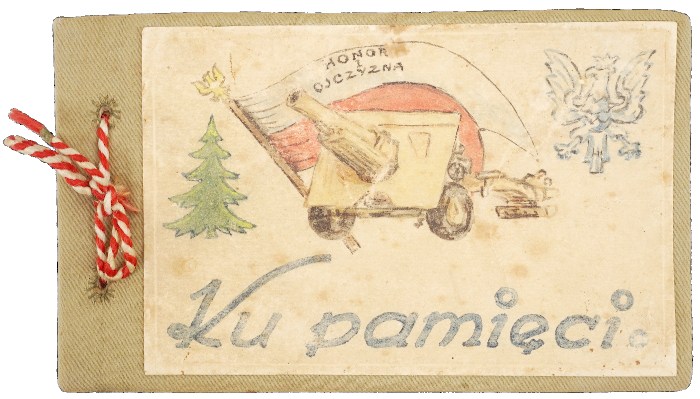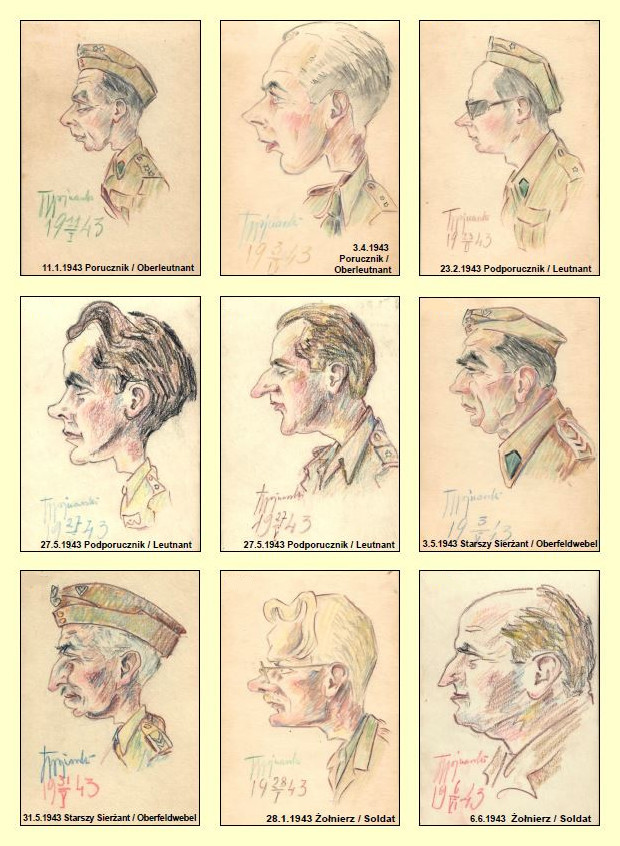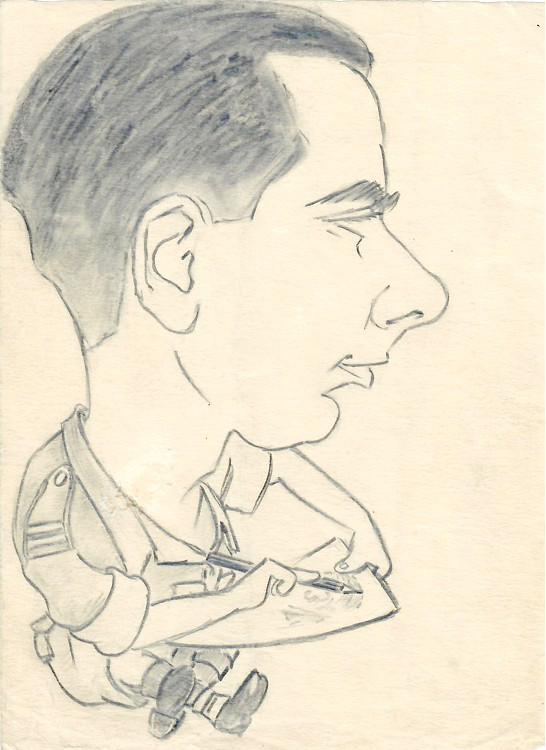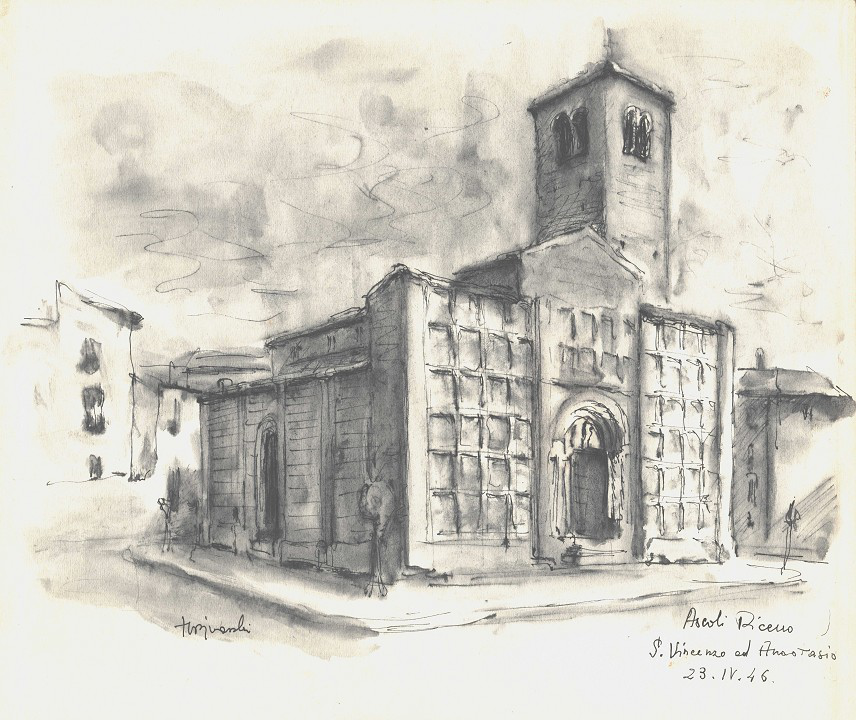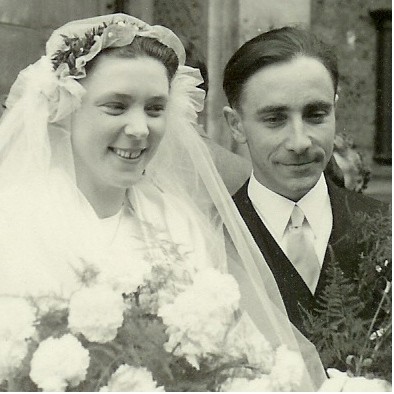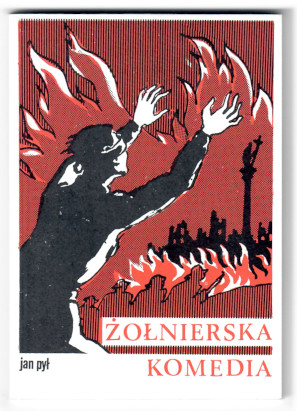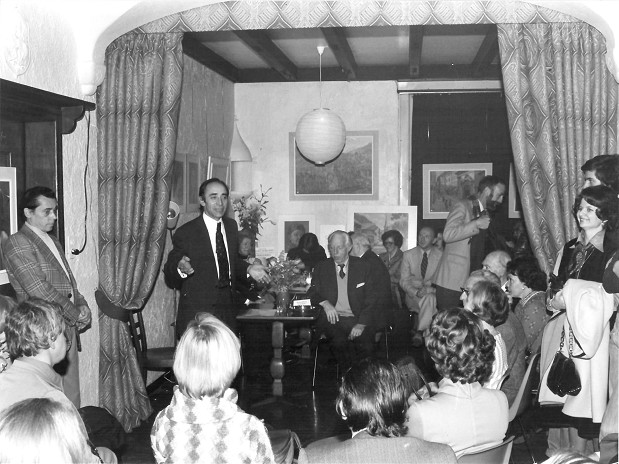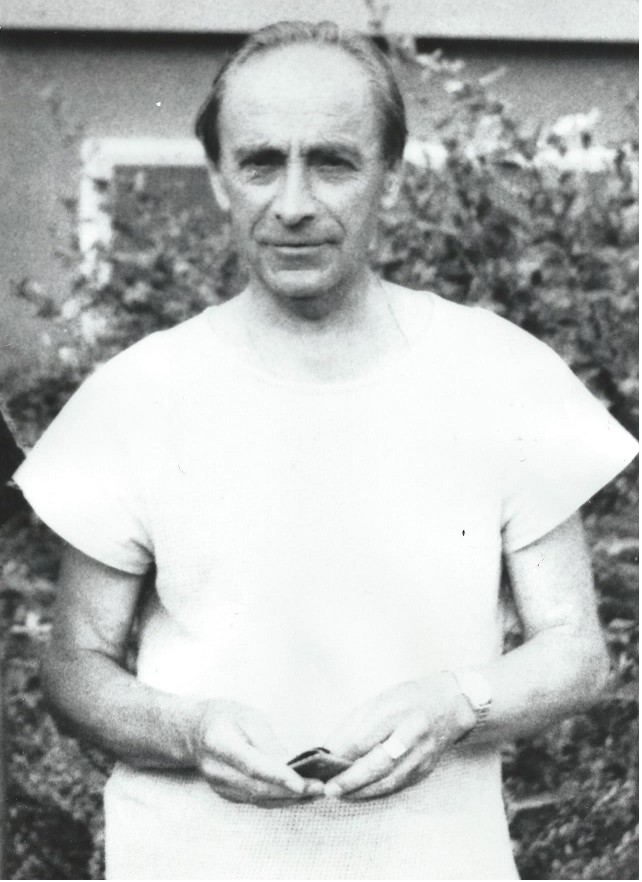TADEUSZ WOJNARSKI
Calendar of Key Events – Biography
In soviet captivity
1922
12.09.1922: Tadeusz Wojnarski is born in Warsaw. His father is Witold Celestyn Wojnarski and mother Eugenia née Bernat. His father works as a lawyer at the Ministry of Health Service. In May 1925 his brother Zbigniew is born, but dies in May 1926. On 27.09.1929 his brother Janusz is born. Nothing is known about Tadeusz’s childhood. He became pupil of the Tadeusz Rejtan Secondary School.
1939
01.09.1939: The army of the Third Reich attacks Poland. There are hopes that the Great Britain will help. Father enlists in the army never to return home. Around 05.09.1939 the Wojnarski family evacuates to Lviv. 17.09.1939: The Soviet Union attacks Poland. Tadeusz has one more year before he completes his secondary education.
1940
09.02.1940: Wojnarski is arrested in Przemyśl on the frozen River San while attempting to cross the demarcation line to the side of the German occupation. He spends a month and a half in prison in Przemyśl. Next, he is transferred to prison in Odessa.
Link: Notes on terror (Zapisy terroru. Author: Tadeusz Wojnarski
1941
After the period of around ten months, he is sentenced in absentia to 5 years of hard labour in a gulag in Ivdel in the northern Ural Mountains. 06.02.1941: together with other Poles, Wojnarski leaves the walls of prison in Odessa. Stages of his journey: Charków, Penza, Syzrań, Czelabińsk, Swierdłowsk, Sama, Iwdel – from one prison to another. 21.03.1941: the transport reaches its destination. What awaits prisoners is hard labour at felling down trees amid freezing temperatures and hunger. 22.06.1941: the German Wehrmacht attacks the Soviet Union. Around 15.09.1941: Wojnarski is released from the gulag after the Sikorski-Majski agreement. He breaks south and arrives in Namangan on 12.12.1941. On his way he starts drawing portraits to earn some money for bread.
January 1942
23.01.1942: Wojnarski draws a portrait of an Uzbek in traditional clothes – it is the only preserved drawing from that time. A few days later, in the military camp at Gorchakov near Namangan he enlists in the army.
Tadeusz Wojnarski’s trail: from the inhuman land to the Near East
Regiment theatre in Iraq (source: Rosikoń Press). Probably Tadeusz Wojnarski
Self-Caricature. Palestine 1943, pencil
In the Middle East
1942
In the middle of March Wojnarski travels by rail to Krasnoyarsk on the Caspian Sea. On 26.03.1942 he evacuates by sea to Pahlevi (Persia, currently Iran). From there, he proceeds in a military convoy to Quastina (Palestine). The beginning of military training. On 05.05.1942 the 3rd Carpathian Rifle Division (3 DSK) was formed as part of the Polish II Corps of general Władysław Anders. Wojnarski is delegated to the 2nd Carpathian Light Artillery Regiment (2 Karpackiego Pułku Artylerii Lekkiej, 2PAL).
In September 1942 the divisions are transferred to Iraq, to the Qizil Ribat/Khanaqiun region and in November 250 km north to the region of Altun-Kopru (130 km to the south of Mosul). This is where Wojnarski, together with his best friend “Staś” (Jarosław Henryk Rudniański), started a regiment’s theatre and staged the play Warszawianka by Stanisław Wyspiański. Wojnarski was responsible for the scenography, decorations and posters.
1943
Some time at the beginning of 1943, Wojnarski returns to the south to the Cadets School in Khanaqiunu. For the time being, he becomes cadet corporal. Between 11 January and 6 June, he draws 16 caricatures in his diary.
In the summer of 1943, he returns to Palestine. At the Barbara military camp, he enrols in a preparatory course for secondary school examinations. He draws at least 17 caricatures of his teachers and one caricature of himself. He has his first publications. In mid-December, the 3rd Carpathian Rifle Division set out for the frontline in Italy. Wojnarski remains in Palestine, together with 400 participants of the preparatory course for secondary school examinations.
Tadeusz Wojnarski’s trail through the Near East
At the front in Italy
1944
26.02.1944: He receives his general certificate of secondary education (matura). Soon, the graduates are also moved to Italy.
17.04.1944: On the way to Monte Cassino, Wojnarski draws his first picture in Italy: Civitanova del Sannio. He takes active part in all the military operation of the Polish II Corps in Italy: 11.04-17.05.1944 – the Battle of Monte Cassino, July 1944 – Ancona, August/September 1944 – the Gothic Front, October-December 1944 – fights in the Emilian Apennines. Wojnarski creates numerous watercolour paintings, including around 40 portraits of soldiers.
January – april 1945 (war)
Winter break until April 1945, followed by the battles of Bologna. On 21.04.1945 the Poles as the first enter the city. On 08.05.1945 the Nazi Germany capitulates.
In 1944 and 1945 the first fragments of the drama Soldiers Comedy («Żołnierska komedia») are written.
Tadeusz Wojnarski’s combat trail with the Polish II Corps in Italy
1945 – 46: Italy. The decision to stay in the West
May – december 1945 (after the war)
Wojnarski continues to paint. In August he travels to Venice for the first time and paints two watercolours. In December he visits Rome and meets Karol Badura, who helps him to enrol in the Academy of Fine Arts in Rome.
1946
At the beginning of 1946 Wojnarski starts his studies at the Academy of Fine Arts in Rome. Additionally, he takes part in the classes of Prof. Marian Bohusz–Szyszko and travels extensively around the country. He befriends Aleksander Werner, who teaches him the technique of drawing in ink. Soon after, he expands on the technique by the addition of various shades of grey. This is a very prolific period of Wojnarski’s life. Still, before the end of the academic year he has to take the decision where to settle. In mid-November he sets out for Spain. On 12.11.1946 he creates a drawing of the harbour in Genoa, for a long time his last one in Italy.
1947 – 58: Spain. Studies, poverty and hopes
1947 – 48
In the spring of 1947 in Madrid, he began studying architecture. Probably because he wanted to learn a solid profession, he decided not to study painting for the time being. Family and friends were happy. In his spare time, he continued to travel and draw. As in Italy, city views and human studies were created. On 20.11.1947 the opening of the first exhibition with drawings from Italy and Spain took place at the renowned Museo del Arte Moderno in Madrid (Download catalogue Madrid 1947).
However, from about mid-1947 he sank into an ever deeper pessimism. In addition to the harsh experiences of the war, he was increasingly plagued by doubts about his future. He longed for family happiness, which seemed increasingly unattainable to him. He found comfort in the Church, his religiosity increased and he sought more and more contact with priests.
In mid-March 1948 he interrupted his studies of architecture to study painting again. Shortly thereafter he travelled to Salamanca, where he drew a series of the Good Friday Procession. After his return, surprisingly for his entourage, he suddenly entered the Catholic institution “Cristo Rey” to prepare himself for a monastic life. From surviving letters it is clear that – apart from the pessimistic thoughts described above – the love of a young Polish woman, who emigrated to England, was not reciprocated. Family and friends were horrified. They all tried to get him to leave the Order, which happened a good six months later. The novice master advised him to remain secular and to start a family. In this way he will be able to serve God just as well. In the first period after he left, it seems he was still depressed and artistically passive.
1949 – 50
In April 1949, he began his studies at the prestigious Academy of Fine Arts„Escuela Central de Bellas Artes de San Fernando”. He created academically correct but somewhat stiff self-portraits and began to use techniques new to him: oil painting and etching. He soon gave up the art of etching, but the initially clumsy oil paintings quickly improved. This technique eventually became – besides the ink drawings – one of the most important in his work.
At the end of August 1949, he travelled to Zurich at the invitation of his distant relative Aunt Sophie Zawadyńska, née Rotenflue (an old family from Rapperswil). He met his future wife Ewa Zawadyńska and painted two oil portraits of her. After a month he went to London to visit friends and soon returned to Madrid.
Tadeusz Wojnarski and Ewa Zawadyńska began an intensive correspondence which in January 1950 led to a mutual declaration of love. At Easter he was visited by Ewa Zawadyńska in Madrid, and they got engaged. In the summer, he spent some time in Switzerland.
Letters from his family and friends indicate that he has grown a lot since then. Ewa, himself also very religious, delivered him from his pessimistic and fatalistic low. He had doubts at first, but she actively pulled him out. So he became a new person and believed in the future. His life’s dream of starting a religious family with a Polish woman was within reach.
At the Academy of Fine Arts he continued his intensive studies. He was much involved in nude studies in different techniques and continued to develop his oil technique.
1951 – 53
On 26.05.1951 the civil wedding took place in Zurich, on 05.06.1951 followed the church wedding in the Liebfrauenkirche.
This new optimism in life was also clearly reflected in his paintings, which became bright and friendly.
On 20.03.1952 birth of his son Tadeusz, and on 07.11.1953 followed daughter Theres.
1954 – 57
1954 he works on the Way of the Cross (brochure PL – brochure DE) for the church in Świętoniowa (south-eastern Poland). On 11.02.1955 Wojnarski opens an exhibition of his religious works, including his Way of the Cross.
Rincones de España. Portfolio of art ROCHE, 20 Pages, 1954 DOWNLOAD
In the year 1954 the Spanish branch of the Swiss pharmaceutical company Roche in Madrid publishes an artistic collection with 20 works depicting Spanish towns painted by Wojnarski. In the meantime, Wojnarski expanded on his technique and watercolours his drawings in colour. He travels a lot around Spain and paints mostly in ink, and ink and watercolour. Wojnarski spends the whole month of May of 1955 in Portugal in a very creative way. He tries to earn his living by selling paintings, occasional artistic cards, from commissions for brochures and artistic calendars, applied graphics, as well as the travelling theatre of marionettes. He is very active in the area of exhibition activities, with at least 16 exhibition and presentation events. After completing his studies, he attends postgraduate courses at the Escuela Central de Bellas Artes de San Fernando. On 26.02.1956 his second son Antoni is born.
1958 – 1967: Switzerland. Looking for happiness.
1958 – 59
The economic situation of the family remains critical. In November 1958, Wojnarski leaves with his family for Switzerland. Nevertheless, he has to return because he needs permission for permanent residence from the Swiss embassy. Ewa begins working in a trade company as a qualified office worker and stays with their children at her mother’s place in Zurich. In the spring 1959, Wojnarski arrives in Switzerland to settle on a permanent basis there. He receives the diploma from the Spanish Ministry of Education with the tile “Professor of Drawing”, dated 07.12.1959. In Switzerland he begins to look for appropriate work.
1959 – 66
Already in July 1959 he begins work as a decorator in the then largest supermarket chain MIGROS. Soon he becomes a valued and successful specialist in paper art and design. He realizes his own projects with the help of co-workers. A lot of his works are on display in the shops in the whole of the Zurich region. But this work is not what he would like to have on a permanent basis. Apart from that, the misunderstandings and tensions with his supervisors impose a heavy burden on him. At that time, he is not very creative but he paints landscapes and oil portraits, as well as makes drawings of Swiss towns in his own technique of ink and watercolour.
At the beginning of his Zurich period he has practically no exhibitions. He presented his works only in September 1961 in the renowned gallery “Städtische Kunstkammer zum Strauhof” in Zurich. However, he met with painful criticism, which kept him hurt for a long time to come.
He becomes increasingly involved in the activities of the Polish émigré society in Switzerland.
1967 – 1990: Switzerland and travel. Now you can live.
1967 – 72
In April 1967 he changes his job and becomes an art teacherin state schools in Zurich. He soon feels in his element in this work. He develops his own pedagogical methods and inspires pupils to do their best. Additionally, he starts organizing drawing courses for adults. In the middle of April 1969, he visits Madrid, where he creates at least 11 paintings in ink and watercolour. In November he organizes the first exhibition after eight years in his own studio-workshop. Since then, he holds regular exhibitions of his works.
With time, he begins to realize more and more that his filigree ink technique is becoming less effective. As a result, he resorts to pastels more often. He also experiments with black felt pen and oil pastel crayon, sometimes adding colouring in gouache. In 1970 he paints his first painting in charcoal and gouache. He develops this technique further and until his death he creates over 300 paintings in this technique. He remains faithful to this style in the future.
1973
This phase of Wojnarski’s creative pursuit includes the painting “Trees in the Wind” of 1974, in which he uses a blue oil pastel and gouache.
Simultaneously with his creative work, Wojnarski is becoming increasingly involved in the activities related to the Polish emigration society and soon becomes a leading figure. In 1973 he becomes President of the «Towarzystwo Dom Polski» (Polish House Association). The previous president was Piotr Adamowski, who established this association in 1958. Wojnarski has ambitious plans. Already in November, the pilot issue of „Nasza Gazetka«, a newspaper for Poles living on emigration in Switzerland is published. It was greatly popular, not only among Polish emigration in Switzerland and this popularity continues to this day. Wojnarski remains its editor-in-chief until 1998. His successor, Tadeusz Kilarski, runs it to this day.
Staging of the Soldiers Comedy in Zurich. The only preserved copy of the photograph.
Source: Nasza Gazetka
No. 7 11.1974
Download PDF (Polski):
1974
In the 5 issue of “Nasza Gazetka”, Wojnarski begins to publish his own memoirs entitles Stories from Early Youth (Opowiadania z wczesnej młodości) under the artistic pseudonym Jan Pył. As the founder and editor-in-chief he does not want to expose himself.
At that time, Wojnarski also finishes writing his drama Soldiers comedy, of which the first fragments he wrote during the war. The title is a cynical allusion to the disappointment experienced by the Polish soldiers with the fight which they have lost, despite their self-sacrificing victory over the German Wehrmacht. The main protagonist of the drama is a soldier fighting for the freedom of Poland in Italy. The key point of the drama is Wojnarski’s vision of the Warsaw Uprising. That fragment was shown to the audience on 28 September 1974 in St. Jacob’s Church Centre near Stauffacher in Zurich.
The gouache-charcoal technique becomes his main style. He travels to Italy almost every year, where he paints mostly town scenes, but also landscapes.
1975
The Polish Museum in the Rapperswil Castle was founded as the first national museum in 1870 (in the years 1795-1918 Poland did not exist as a state). In 1952 the communist authorities transferred the collections to Poland. Since then, only one chamber in the tower is a reminder of that fact. In 1975, the Polish Museum is re-opened and Wojnarski is actively involved in this project.
In the same year, the Polish place «Dom Polski» opens at Eisfeldstrasse 6 in Zurich, which becomes the centre of Polish culture. As the main initiator of the project, Wojnarski fulfils in this way the vision of the founder Piotr Adamowski.
1978
Wojnarski receives Swiss citizenship. Even on this occasion he tells the Swiss authorities that he will be a loyal Swiss, but will remain a Pole in his heart.
1980
He creates four gouaches and sketches for murals for the community room at St. Jacob’s church in Zurich. Eventually, the work was not commissioned.
1981
The “Nasza Gazetka” paper prints the last instalment of the Stories from Early Youth (Opowiadania z wczesnej młodości) by Jan Pył. In the meantime, the readers know already that the author is Tadeusz Wojnarski..
1987 – 91
In 1987, having worked for 15 years with children as an art teacher, Wojnarski retires. A new, very creative stage of his life begins: in 1988 he paints 45 gouaches, most of them in Italy. He paints much less in oil then.
1991 – 1999: Memories and fruits of a rich life.
1991
In May 1991 he makes a journey to Monte Cassino. Here he meets his two closest brothers-in-arms, Staszek (Jarosław Henryk «Staszek» Rudniański) and Lutek (Lucjan Słota). It is a very emotional event. On the outer wall of the church, near the artillery position, the commemorative tablet with the names of their fellow-soldiers from the regiment who fell in the battle is unveiled. In his unpublished Stories from Later Youth, Wojnarski gives account of their stories.
In the summer of 1992, Wojnarski visits Poland for the first time since 1940. In the family archive, there are two gouaches, created in Krynica. He returns to the oil technique, but he still relies on the charcoal-gouache technique.
On 29 August his second exhibition at the Polish Museum in Rapperswill opens. This is where he presents for the first time the paintings created in the charcoal-gouache technique around the year 1991, depicting his sorrowful journey through Soviet territories. During the opening night, he is awarded the Officer’s Cross of the Order of Polonia Restituta by the Republic of Poland and with the Julian Godlewski Award bestowed on him by the Polish Cultural Foundation “Libertas” for his cultural achievement to the benefit of the Polish emigration in Switzerland. On the award certificate of the Officer’s Cross Polonia Restituta there is a signature of the President of Poland Lech Wałęsa.
1994
Second visit to Poland. He paints a few gouaches (among others, «Nad Dłubiną» – “By the River Dłubina” ) and several charcoal portraits for friends.
1996
The first diagnosis of cancer. He reacts positively to therapy. One more trip to Italy – to Tuscany.
1997
The disease is increasingly exhausting for Wojnarski. He goes on his last trip to Italy to the island of Ischia. Here he paints a few gouaches. In Seleger Moor (marshland) in the canton of Zurich he paints two more gouaches and one oil painting “The Pond of Water Lillies”. They are probably his last works.
1998
In August 1998, he passes the position of editor-in-chief of “Nasza Gazetka” to his very good friend Tadeusz Kilarski. In this same year Kilarski publishes „Opowiadania z wczesnej młodości” (Stories from Early Youth) in the form of a small book as a jubilee issue number 200.
In October he has his last exhibition during his lifetime in the windows of ”Schaufenstegalerie der Künstlervereinigung” at Stampfenbachstrasse in Zurich. At that time, he begins writing the second part of his autobiography entitled „Opowiadania z póżniejszej młodości” (Stories from Later Youth). It includes the period of his military training in the Near East (1942) until his migration to Spain (November 1946).
1999
Wojnarski indefatigably continues to work on his autobiography despite increasing pain. He finishes it in a very raw form. A few fragments of the work are published in the catalogue of the exhibition “From the Inhuman Land to Italy”. It awaits publication of the complete text. On 7 August Tadeusz Wojnarski dies in the clinic “Zürcher Höhenklinik Davos-Clavadell” having suffered a long and painful illness.
Link: „Nasza Gazetka” 5/1999: From the Memoir Card: Tadeusz Wojnarski dies (Tadeusz Wojnarski nie żyje).
Translation into English: Adam Kunysz, Chmielów PL
2023
Reburial of Tadeusz Wojnarski to his wife Ewa on December 5, 2023 at the Schwamendingen Cemetery in Zurich (Stettbachstrasse 70, 8051 Zurich, Switzerland – more about the ceremony here, only in German and Polish).

Heidenbüelstrassse 19
CH-8352 Räterschen (Elsau)
Wszystkie prawa zastrzeżone dla – Alle Rechte vorbehalten für – All rights reserved by:
Tadeusz Wojnarski 2020-2025
Webdesign: S P E C T A R
Odpowiedyialność – Verantwortung – Responsibility:
Tadeusz Wojnarski (jun.)
Heidenbüelstrassse 19
CH-8352 Räterschen (Elsau)
Wszystkie prawa zastrzeżone dla Tadeusz Wojnarski 2020-2021 – All rights reserved by Tadeusz Wojnarski 2020-2021
Webdesign: S P E C T A R
Odpowiedyialność – Verantwortung – Responsibility:
Tadeusz Wojnarski (jun.)









